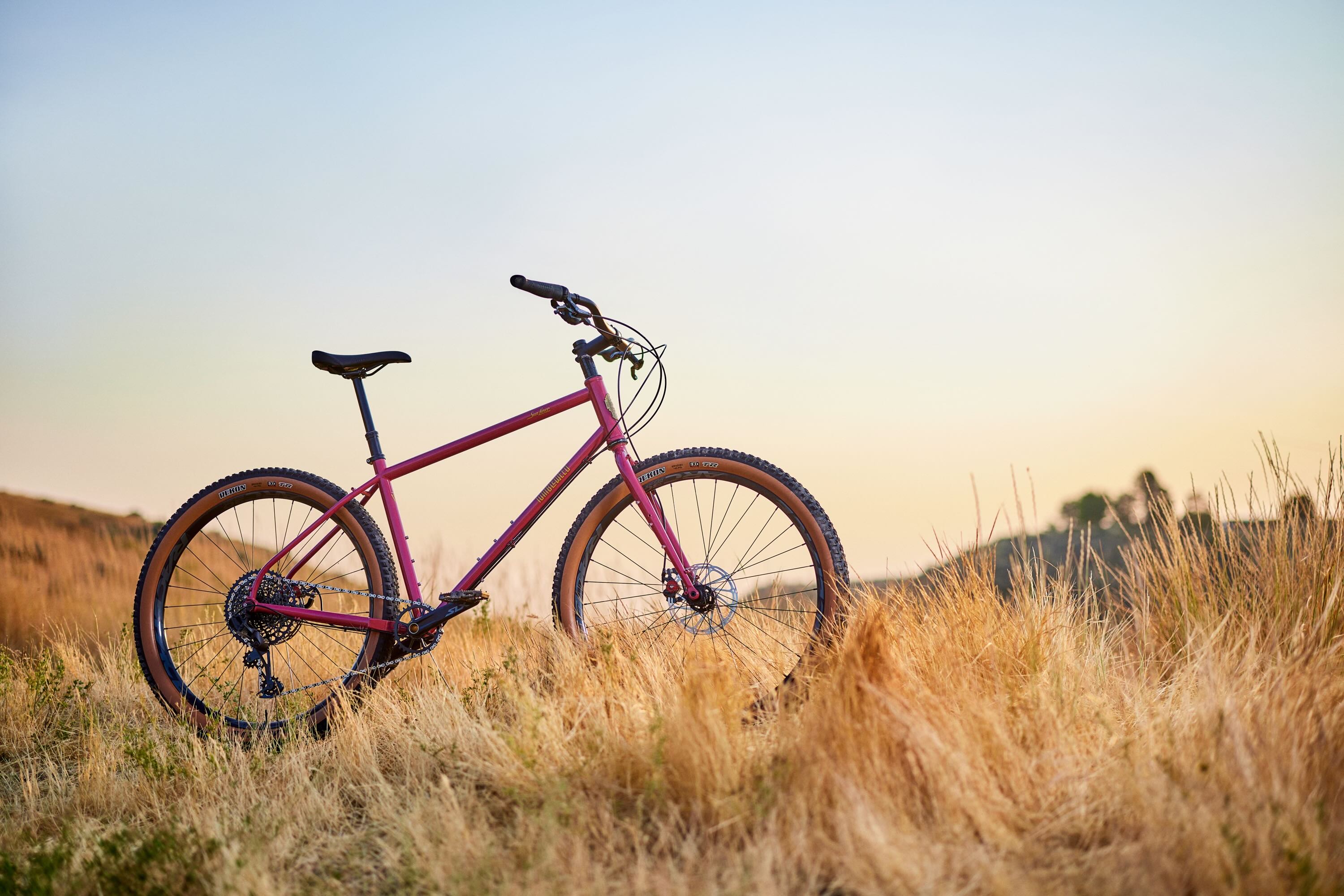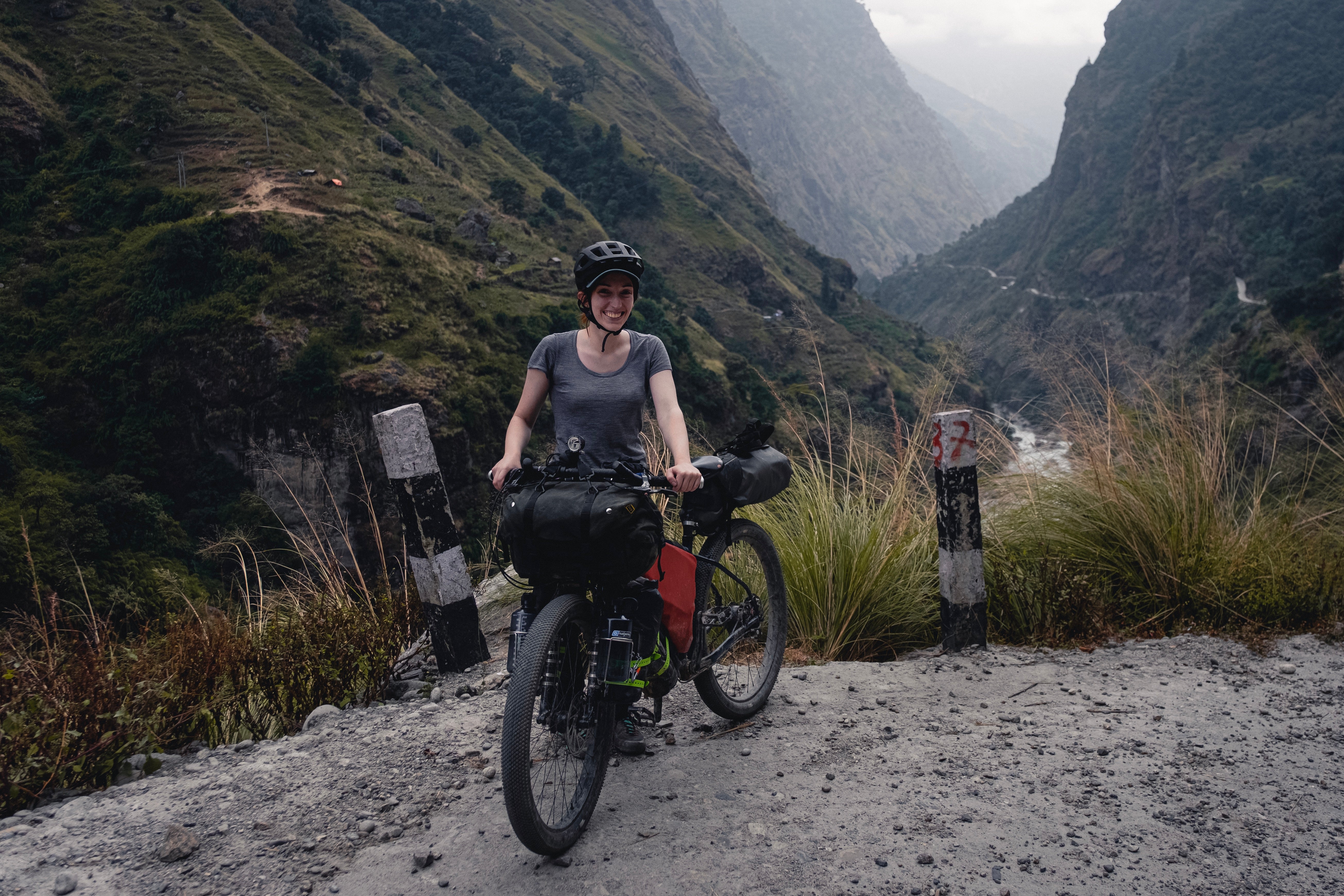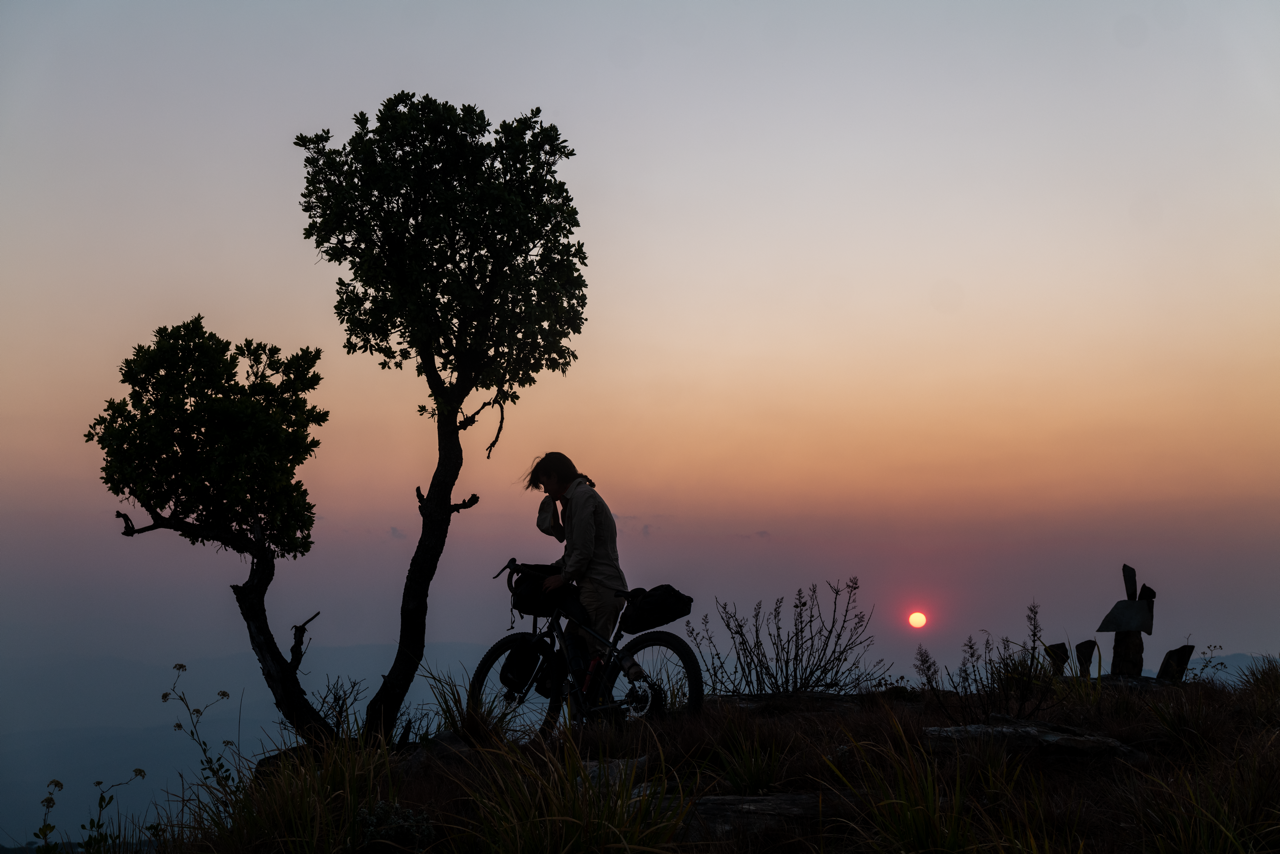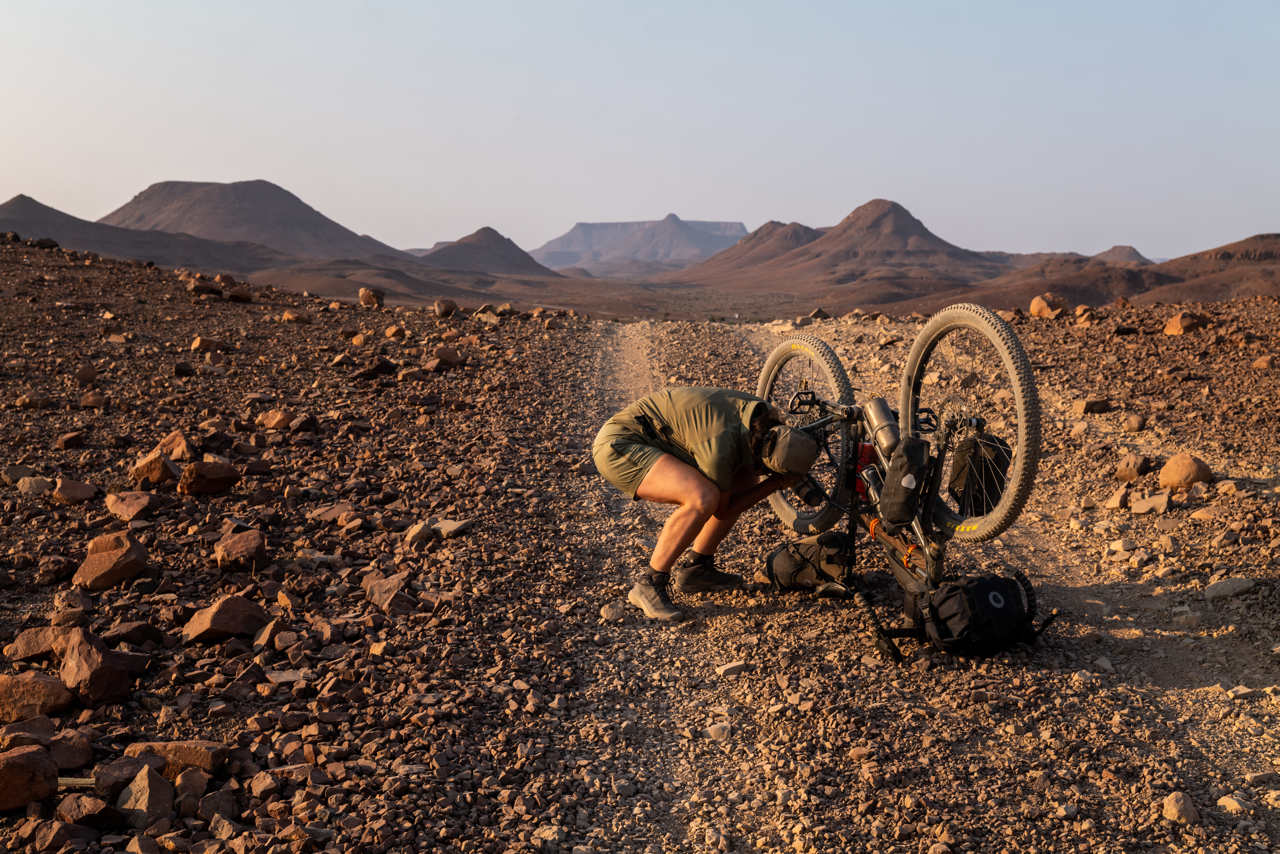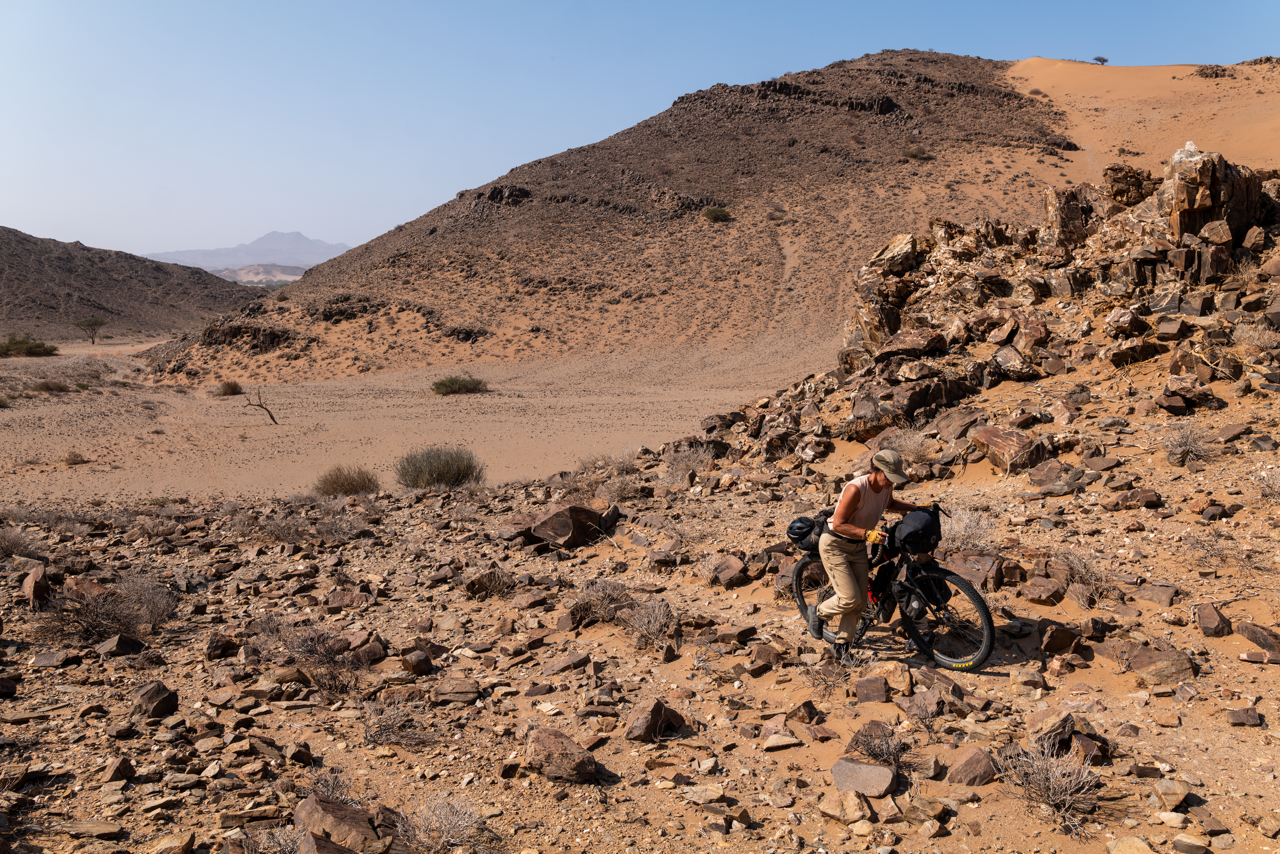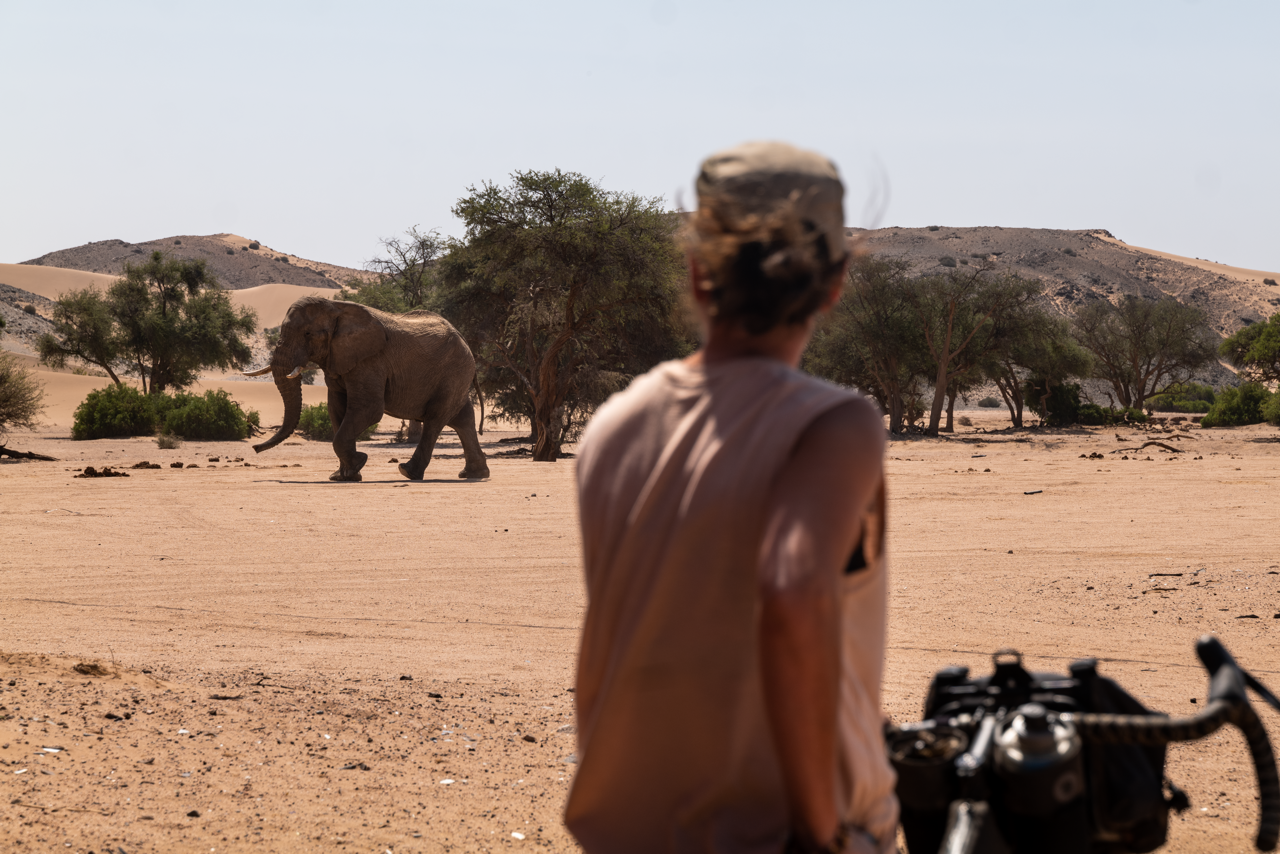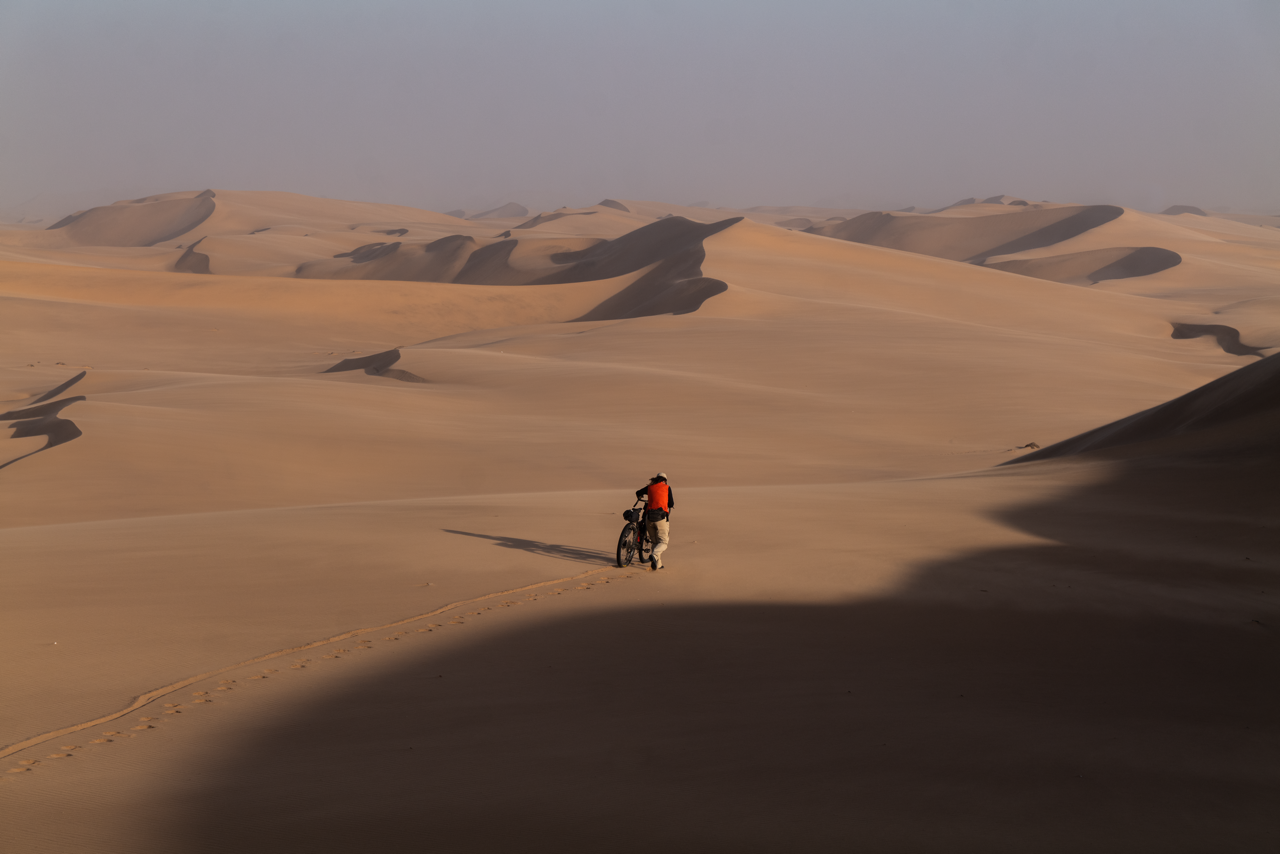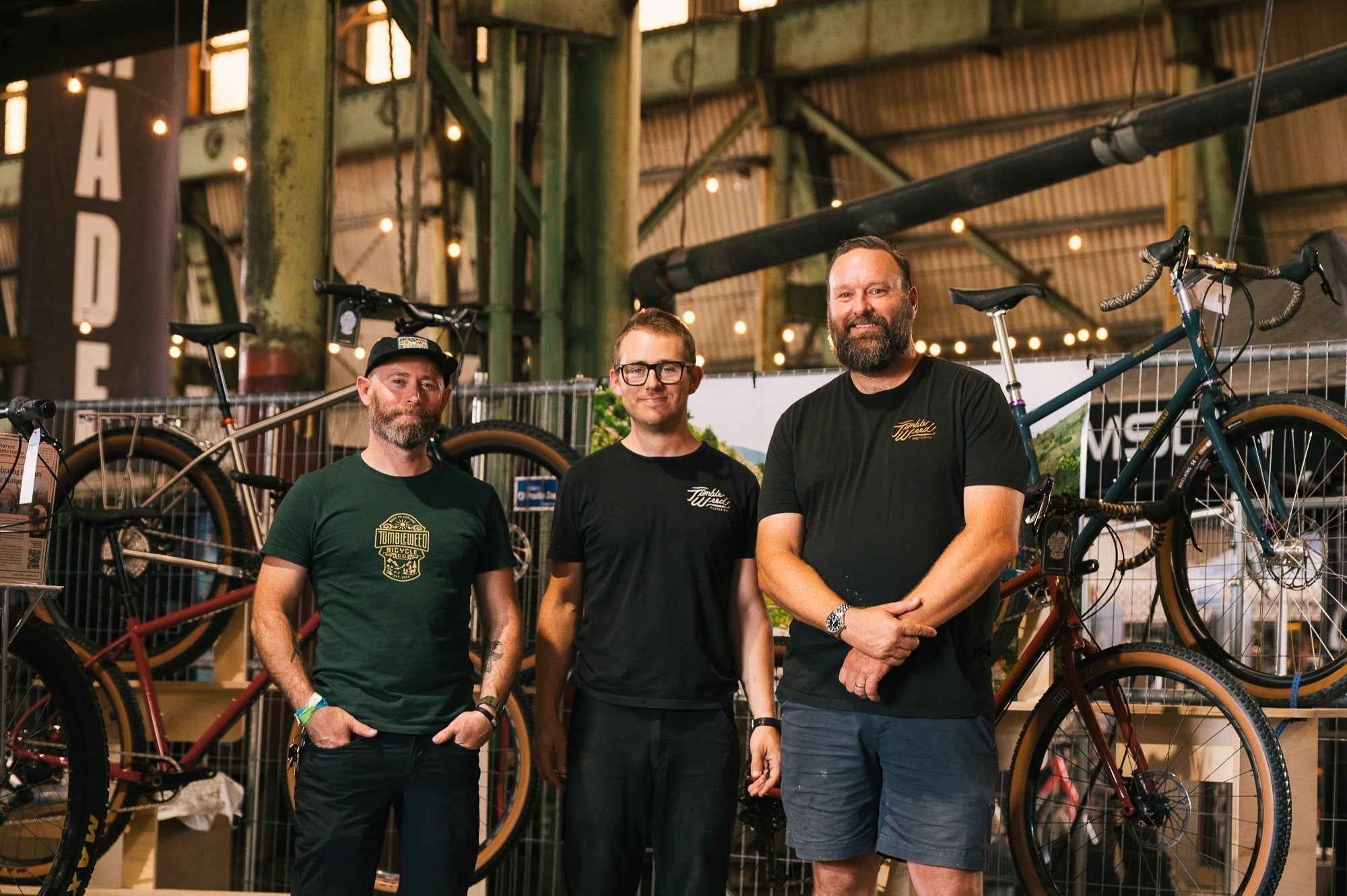Crossing the African Continent by Bike: Featured Riders Jens and Jennie Assur
Meet Jens and Jennie Assur, two adventurers who recently crossed the African continent on their Tumbleweed Stargazers. We caught up with Jens to hear more about how their cross-continental expedition went, and he and Jennie shared reflections on their transformative adventure with us.

Tell us about your route—where did you start, where did you end, and how did you choose the path you took through Africa?
We decided to cross the African continent by bike, from the Indian Ocean in the east to the Atlantic in the west. The journey began when we landed in Beira, a coastal city in Mozambique, where the humid sea air mixed with the excitement of finally setting off.


From there, we pedaled westward through the heart of Mozambique, toward the border with Zimbabwe and into the rolling green Eastern Highlands. One of the absolute highlights awaited us there—Chimanimani. A small, lush mountain village with sweeping views, cool highland air, and some of the friendliest people we met on the trip.

From Chimanimani, we continued west through Zimbabwe, passing through Bulawayo before reaching Victoria Falls on the Zambian border. Naturally, we took the time to stand in the mist of the falls, enjoy a proper meal at one of the town’s many restaurants, and lighten our load by shipping home a 6.2-kilogram box of things we realized we could live without.
From there, the route took us toward Namibia. The so-called Caprivi Strip in the far north is home to a dense population of wild animals, making it unsafe for cycling, so we hitched a ride with a kind man in a pickup truck. At the Okavango River, right on the Angolan border, we were back in the saddle, heading south through Namibia toward Damaraland and the Desolation Valley. This stark, magnificent mountain region gave us close encounters with desert elephants, rhinos, and zebras—moments that made us stop pedaling just to take it all in.




After five weeks of riding, the scent of saltwater began to cut through the desert air. With a brief stop in Henties Bay—and a serious headwind that tested every muscle—we finally rolled into Swakopmund on the Atlantic coast. Our plan was intentionally loose. We had detailed maps downloaded to our GPS units and phones, but no fixed itinerary. The route shifted constantly—shortcuts, detours, and complete changes of plan—shaped by road conditions, the heat, the time we had, and the constant trade-off between beautiful scenery and fast-moving roads.
How long were you on the road, and how many kilometers did you cover in total?
We spent about six weeks on the road, including rest days and the occasional travel day without cycling. Some days meant pushing our bikes through deep desert sand for hours. On others, we covered up to 120 kilometers in a single stretch. By the time we rolled into Swakopmund, we had covered roughly 2,200 kilometers.


What inspired this particular journey across the African continent, East to West?
We’d explored parts of this region before by car with a rooftop tent, and we’d fallen in love with the landscapes, the people, and the sense of raw adventure it offers. This time, we wanted to push ourselves further—to see it at the slowest possible pace and in the most demanding way we could imagine.
And that’s exactly what happened. Arriving by bike meant rolling into small villages at eye level, stopping to talk with people on the roadside, breathing in the scents of woodsmoke and dust, feeling the warm wind on our faces, and hearing the calls of birds and animals around us. It was a completely different experience—more immersive, more human than anything we’d done before.


Were there any unexpected detours, encounters, or surprises along the way?
We were honestly surprised by how few problems we faced during our six weeks in the saddle. We never once felt unsafe—neither from animals nor from people—and were met with respect, curiosity, and warmth wherever we went.
The only real “incident” came courtesy of a baboon, who managed to “rob” one of our bikes while we weren’t looking. Fortunately, it grabbed the trash bag rather than the camera bag—though we suspect it was equally disappointed with its haul.

How did you handle accommodation, food, and water along the way?
We spent all but four nights in our tent. Most of the time we camped in or near villages, or at organized campsites. We prefer being around people rather than wild camping, though sometimes pitching the tent in the middle of nowhere was the only option.
The first week, our bikes were heavy loaded with food and water for several days at a time. But we soon realized we didn’t have to carry quite so much. We could refill from local wells, and many villages had small general stores. Even if the shelves were sparse, they almost always had peanut butter, canned white beans and porridge. That became our standard menu.



We always kept enough water for a couple of days, topping up whenever we could, and we drank through a smaller bottle with a built-in water filter. It kept things simple, safe, and—most importantly—kept us moving.
Bikepacking often includes what some call “type 2 fun”—challenging experiences that are rewarding in hindsight. What were some of the hardest parts of your journey?
The toughest combination was the intense heat, the weight of our fully loaded bikes, and the endless stretches of bumpy, sandy roads. Together, they made our progress much slower than we’d planned. We avoided the main paved roads whenever possible, traffic there can be heavy, and vehicles sometimes pass uncomfortably close.
Coming from northern Sweden, nothing could really prepare us for the scorching sun and heat here. We wore full-coverage clothing, partly for sun protection and partly as a safeguard against certain animals. We drank large amounts of water, refilling from local wells along the way. Thanks to a good water filter, it worked perfectly—we didn’t have a single stomach issue the entire trip.



Can you share a story or two that really captures the spirit of your time on the road?
After ten hours of cycling through Namibia’s Desolation Valley under a blazing sun, we came upon a tiny village—about seventy people living in small huts and shacks in the middle of the vast desert. We stopped and asked if we could pitch our tent there. “Of course,” came the reply. “You can even borrow the key to the school if you want to use the toilet or take a shower.”
Later that evening, as we lay in our tent, we heard footsteps outside. It was one of the village women who had seen us arrive. She handed us two small loaves of freshly baked bread. “You probably don’t have much to eat on those bikes,” she said—and she was right. When we later saw her home—just a few square meters of corrugated metal—we realized she had likely given us the last of her own food supply. That gesture of kindness and generosity stayed with us. It was a perfect example of what we experienced again and again on this trip: people with very little in terms of material wealth, yet willing to share so much of themselves.

As we sat in the tent eating the warm bread, a new sound cut through the quiet. We peeked outside to see a herd of twelve elephants walking right past us. The rush of excitement—and a bit of fear—was immediate. Luckily, they were simply on their way to a waterhole farther down the valley.
Kindness, generosity, awe, and a touch of fear—all in the space of a single evening.

How did the Tumbleweed Stargazers perform for you across such varied terrain?
Flawlessly. The Stargazers gave us 100% reliability on every surface we rode—sand, gravel, rock, and tarmac. Not a single mechanical issue, not even a flat tire. We cleaned and lubricated them every evening, and they rewarded us with comfort, stability, and the kind of packhorse dependability you can trust anywhere.



Were there particular features of the Stargazer that made a noticeable difference on this route?
The riding position was phenomenal—no aches or pains, even after long days on corrugated gravel. We ran Tumbleweed’s racks, which let us carry large volumes of water—bulky and heavy, but essential. Sturdy wheels and a tough gearing system kept us free from the mechanical issues so common on routes like this. And, of course, the aesthetics: a beautiful bike adds something intangible but real.
Your bikes were fully loaded for this trip—can you walk us through your setup?
We ran two different setups, each tailored to its rider. Jennie’s bike was the lighter of the two, fitted with Fjällräven’s new Hoja bag collection: the Handlebar Rolltop for clothing, a seat bag holding her sleeping mat and sleeping bag, a top tube bag for sunscreen and her phone, and a pair of snack bags—one carrying a water bottle with a filter. On the forks, she mounted Ortlieb waterproof fork bags: one with all our spare bike parts, the other with first aid equipment and medication. Her frame also carried mounts for four water bottles, a fuel bottle, and the tent poles. For quick-access essentials, she wore an expandable hip pack.
My bike took a more heavy-duty approach with both front and rear racks. On the back, I carried a pair of lightweight Mountain Laurel panniers—one with the tent, sleeping bag, and sleeping mat, the other with clothing. Strapped on top was a bag of soft water bladders, with a total capacity of 26 liters. The front rack carried our cooking kit and more water bottles, along with a Bags by Bird Piccolo handlebar bag for anything I might need while riding: bike tools, tire repair kits, power banks, camera batteries, a first aid kit, my helmet, and an extra layer. In the center of the frame, a waterproof Rockgeist frame bag held the heavy items—canned food and extra water—keeping the weight low and balanced.


Given the scale of the trip, we considered our bikes relatively light. That was always the goal: to keep things minimal. But the kilos add up fast—food and water are heavy, and so are spare parts and medical supplies. After the first stretch, we realized there were plenty of wells along the route and frequent opportunities to buy fresh cans of food. Gradually, we carried less. Even shedding just a few kilos made a huge difference—you feel it in every muscle after eight hours in the saddle.
Were there any pieces of equipment that made a big difference day-to-day?
Two absolute lifesavers: a good water filter and a small toilet for the tent. The filter meant we could safely drink from local wells and streams, and the toilet spared us from stepping out into the dark—something you really don’t want to do when wild animals are moving around outside.
We also used a tent where the outer fly could be removed, letting us sleep most nights under just the mosquito net. In the heat, that small detail made all the difference—cooler air, a view of the stars, and a sense of being part of the landscape rather than shut away from it.


Another favorite was an ultra-thin wind jacket. We wore it to protect ourselves from the sun as much as the wind—it dried in minutes, weighed almost nothing, and earned its place in the panniers every single day.
And for the camera, a waterproof waist pack was essential—not only to protect it from rain and dust, but to keep it close at hand and safe from the bone-rattling vibrations of the roughest roads.
Equipment and packing are critical on a journey like this. Everything essential has to come along—tools, spare parts—while keeping both volume and weight as low as possible. We deliberately limited the number of clothing changes and washed along the way instead, often at the same time as we showered. Every gram saved made the bikes easier to handle, especially on long climbs or in deep sand. It’s a constant balance between being prepared for anything and not carrying more than you truly need.
What advice would you give to bikepackers dreaming of a similar transcontinental journey?
Start small. Shorter trips are the perfect testing ground—for your body, your mindset, and your gear. Every time you head out, you’ll learn something new: how your bike feels after a full day in the saddle, how you react to fatigue or heat, what you actually need versus what you thought you needed.
Planning matters, but flexibility matters more. On a trip like this, you can’t plan every detail—you’ll be forced to adapt to weather, road conditions, mechanical surprises, and your own changing energy levels. Meet your master plan with openness, patience, and a healthy dose of humor. Learn to embrace uncertainty—it’s where the best stories come from.
How did your dual roles as photographer and adventurer shape your experience of the trip?
I’ve been practicing that exact combination for years. In my latest project, Private Nature, much of the work revolved around confronting yourself in the wild growing as a person by exposing yourself to the elements, to raw landscapes, and to the unknown. This trip was a natural extension of that philosophy.



I value the dual roles immensely. On one level, I’m completely immersed in the experience—feeling the excitement, the exhaustion, and the physical challenge. On another, I’m observing and documenting, trying to capture not just what it looked like, but what it felt like. That balance between living the moment and preserving it for others gives me a deep sense of purpose.
Authenticity and credibility are non-negotiable for me. I think that comes from my background as a photojournalist, reporting from war and conflict zones. You learn quickly that if you haven’t truly been there—if you haven’t lived it yourself—your images will lack the depth and truth that connect with people. On this trip, the bike wasn’t just a means of transport; it was my way into the story. Every kilometer I pedaled added weight to the photographs and the words.
Now that you've completed this epic journey, what’s next? Any future trips on the horizon?
We’re already looking at other cycling routes in Africa—the trip left us wanting more. There’s something about the vast landscapes, the direct contact with people, and the feeling of being both completely exposed and completely free that’s hard to match.
I’d also love to cross Europe by bike, replacing flights and long drives with something slower and more grounded. You see so much more when you’re not rushing past it.
For now, I’m back in Jämtland, riding the roads and trails around home. They may not be epic in scale, but the freedom I feel on a bike is the same—whether it’s in the Namib Desert or just beyond my doorstep. That’s the beauty of cycling: adventure is always as close as the next ride.
What does adventure—and adventure by bike—mean to you now after this experience?
For me, adventure can be grand in scale or as simple as a ride from my doorstep. The feeling in the saddle doesn’t depend on distance or destination—it’s about being out there, moving under your own power, and opening yourself to whatever the road brings.
That said, I dream of more journeys like our ride across Africa. Experiencing new cultures, landscapes, and people from the bike is unlike anything else. You move slowly enough to notice the smallest details—the smell of woodsmoke in the morning, children running alongside you, the changing texture of the road beneath your tires. In many villages, we were met like honored guests—waved at, called out to, asked questions, encouraged. Those moments of connection created a sense of community so strong it will stay with me forever.


Bikepacking, to me, is the most meaningful way to travel the world. It has a minimal environmental footprint, yet offers immense rewards—physical challenge, mental clarity, and emotional connection. You don’t just pass through a place—you live it, one pedal stroke at a time.
How can our audience find you online and follow your next adventure?
I suggest you follow my Instagram, where I often share both my private and professional experiences: @jensassur. Hope to see you there!
About Jens and Jennie Assur
Jens Assur is one of Sweden's foremost photographers and filmmakers. Assur came to prominence in the 1990s as a reporter and photographer at Sweden’s largest daily newspaper at that time and has since held several acclaimed exhibitions; Under the Shifting Skies, HUNGER, and Africa is a Great Country. In addition to his photographic projects, Assur has written and directed five feature films, among them The Last Dog in Rwanda, Killing the Chickens to Scare the Monkeys and Ravens, which have been selected to the world’s leading film festivals and won numerous international awards, among them First Prize at Tribeca Film Festival, the Sundance/NHK award at the Sundance Film Festival, and Grand Prix at Clermont-Ferrand short-film festival, France.
Jennie Assur is married to Jens Assur and work as a producer and project manager at Studio Jens Assur. Jennie and Jens live in Duved, a small village in the North of Sweden together with their four sons.


